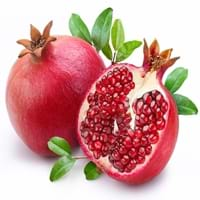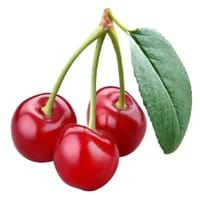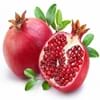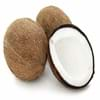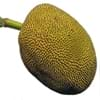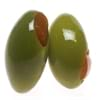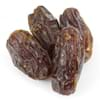Health Benefits
Cancer prevention, Heart care, Helps in cartilage regeneration, Improves stomach health, Increase in haemoglobin, Increases metabolic rate, Prevents constipation
Arthritis prevention, Cancer prevention, Gout treatment, Regulation of heart rate, Treatment of osteoarthritis
General Benefits
Boosts immune system, Controls blood pressure, Controls blood sugar levels, Digestive aid, Maintains healthy cholesterol level
Anti oxidant properties, Anti-inflammatory properties, Controls blood pressure, Cures headache, Digestive aid
Skin Benefits
Anti-aging benefits, Skin rejuvenation, Treatment of acne
Anti-aging benefits, Brightens and lightens complexion, Skin rejuvenation, Treatment of dark spots
Hair Benefits
Prevents hair loss, Promotes longer and healthier hair, Treatment of dandruff
Acts as moisturizer, Protects hair, Regulates hair growth, Rejuvenates scalp
Allergy Symptoms
Abdominal pains, Anaphylaxis, Itching
Anaphylaxis, Breathing difficulty, Fainting, Itching, Nasal congestion, Nausea, Swelling of mouth, tongue or lips, Tingling sensation in mouth, Vomiting, Wheezing
Side Effects
Allergic reaction, Cold, Breathing difficulty, Irritation, Swelling
Abdominal cramps, Allergic reaction, Bloating, Intestinal gas
Best Time to Eat
Best if taken as a breakfast (or empty stomach), As a snack in the late afternoon, Eat the fresh ones, avoid mixing with any other foods, don't eat after meal., Morning time (before lunch)
Best if taken as a breakfast (or empty stomach), As a snack in the late afternoon, Don't eat after meal, Morning time (before lunch)
Vitamin B5 (Pantothenic Acid)
Vitamin C (Ascorbic Acid)
Vitamin K (Phyllochinone)
Calories in Fresh Fruit with Peel
Not Available
Calories in Fresh Fruit without Peel
Not Available
Calories in Frozen Form
Not Available
Calories in Canned Form
Not Available
Type
Tree fruit
Tree fruit
Varieties
Balegal, Crab, Cloud, Francis, Freshman and Granada
Evan, Mesabi, Meteor, Northstar, Montmorency and Mongolian
Color
Dark red, Light pink-red
Red
Taste
Juicy, Sweet
Sweet-Sour
Origin
India, Iran
Europe, Western Asia
Soil Type
Clay, Sand
Sandy
Climatic Conditions
Cold, Dry, Hot
Cold
Facts about
- Pomegranate means apple with many seeds.
- It was called as the “apple of Grenada” in early English.
- In Hinduism, this fruit symbolizes prosperity and fertility.
- Pomegranate trees can live upto 200 years.
- Using 1/4 tablespoon of almond extract with cherries, brings out the real flavor of cherries.
- In earlier times, serving cherry pie with ice cream was prohibited.
- 23 April is National cherry cheese cake day.
Other Countries
Africa, India, Middle east, Pakistan
Albania, Armenia, Austria, Azerbaijan, Belarus, Croatia, Denmark, Germany, Hungary, Iran, Italy, Macedonia, Moldova, Poland, Russia, Serbia, Ukraine, United States of America, Uzbekistan
Top Importer
Europe
Germany
Top Exporter
India
Poland
Botanical Name
Punica granatum
Prunus cerasus
Synonym
Punica malus
Not Available
Subkingdom
Tracheobionta
Tracheobionta
Division
Magnoliophyta
Magnoliophyta
Class
Magnoliopsida
Magnoliopsida
Family
Lythraceae
Rosaceae
Species
P. granatum
P. cerasus
Generic Group
Pomegranate
Rose
Difference Between Pomegranate and Sour Cherry
We might think that Pomegranate and Sour Cherry are similar with respect to nutritional value and health benefits. But the nutrient content of both fruits is different. Pomegranate and Sour Cherry Facts such as their taste, shape, color, and size are also distinct. The difference between Pomegranate and Sour Cherry is explained here.
The amount of calories in 100 gm of fresh Pomegranate and Sour Cherry with peel is Not Available and 50.00 kcal and the amount of calories without peel is 83.00 kcal and Not Available respectively. Thus, Pomegranate and Sour Cherry belong to High Calorie Fruits and Low Calorie Fruits category.These fruits might or might not differ with respect to their scientific classification. The order of Pomegranate and Sour Cherry is Myrtales and Rosales respectively. Pomegranate belongs to Lythraceae family and Sour Cherry belongs to Rosaceae family. Pomegranate belongs to Punica genus of P. granatum species and Sour Cherry belongs to Prunus genus of P. cerasus species. Beings plants, both fruits belong to Plantae Kingdom.
